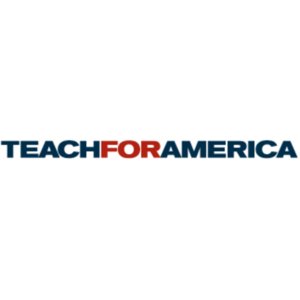Compass Teacher Rubric:
Observation of Teachers of Students with Significant Disabilities
When observing a teacher of students with significant disabilities using the Compass Teacher Rubric (an abridged version of Charlotte Danielson’s Framework for Effective Teaching), evaluators may find that some elements of the rubric are difficult to interpret within the context of the setting. While the Danielson group is working to make adjustments in the rubric to facilitate observation in these settings, the information provided here may assist these teachers and their evaluators in the observation process for school year 2012-2013.
This guidance is presented in three sections:
- Pre-Observation Conference Questions/Considerations (pages 2-3)
In order to conduct an observation of such a teacher and be prepared to provide appropriate and effective feedback, the evaluator must have a general understanding of 1) the needs of the students in the class, and 2) expectations regarding the practices of the teacher in meeting these needs. Students with significant disabilities in classrooms may vary widely in terms of ability levels; thus, instructional targets and strategies, assessments tools, and supports must be highly individualized. This population of students presents complex challenges and unique needs, and a well-planned pre-observation conference between the teacher and his/her evaluator can help to set the stage for a meaningful observation/feedback cycle.
These questions/“considerations” are presented as bulleted lists of possible areas for discussion between the teacher and his/her evaluator, organized according to the Domains of the Compass Teacher Rubric. Not all items may be relevant in each teacher’s situation, as the priorities and needs identified in each student’s IEP should help to drive the discussion between the teacher and his/her evaluator. (NOTE: This is not a checklist of items that must be addressed. Use of this tool is optional.)
- Key Concepts Embodied in Best Practices Related to Education for Students with Significant Disabilities (pages 4-5)
A general understanding of these key concepts may assist an evaluator in the process of observing in a class for students with significant disabilities. For further information, visit the Louisiana Department of Education’s Access Guide at http://sda.doe.louisiana.gov
- Possible Examples of “Highly Effective” Related to Teachers of Students with Significant Disabilities (pages 6-7)
These examples are presented as a supplement to those found within the Compass Teacher Rubric, not a substitute. These examples align only to the “Highly Effective” category, and observers should use the Compass Teacher Rubric to consider how similar examples might be described in other rating categories (i.e., Effective: Proficient, Effective: Emerging, and Ineffective). The examples are just that, examples; they are not fully representative of the types of student or teacher actions you would expect to see in a particular classroom. When evaluators are observing in a class, they are urged to keep in mind the wide range of abilities, needs and challenges of the students in a particular setting.
Pre-Conference Observation Questions/Considerations
NOTE: As a reminder, this is not a checklist of items that must be addressed. Use of this tool is optional, and the items presented are suggested topics of discussion which may help the stage for a meaningful observation. Not all items may be relevant in each setting.
1c. Planning and Preparation: Setting Instructional Outcomes
- What should I expect to see in the observation that is aligned to the students’ IEPs?
- What are your students’ strengths, learning priorities, and support needs (e.g., communication, assistive technology, modified materials, behavioral supports, sensory issues) and how these are reflected in the IEPs, the lesson, and SLTs?
- How do you determine “rigor” for individual students?
- What are the learning/instructional objectives of your students as they relate to skill acquisition, fluency, maintenance, and generalization?
- How do you support increasing the active participation of students?
- How do you incorporate the principal of partial participation?
- How do you collaborate with instructional team members to establish learning goals (e.g., Speech-Language Pathologist, Physical Therapist, and Occupational Therapist)?
2c. The Classroom Environment: Managing Classroom Procedures
- How will you group students for instruction and use resources to effectively manage the groups (e.g., assignment of paras to manage small group)?
- How will you incorporate available assistive technology (AT) and augmentative/alternate communication (AAC) supports?
- What are your procedures for schedules and transitions (including plans for management of student self-directed time)?
- How will you meet health care/physical support needs of students (when applicable)?
- What environmental modifications/adaptations (e.g., specialized equipment, age-appropriate picture schedule, materials/equipment layout promotes student understanding/navigation of classroom instructional areas) will you incorporate?
- Are there situations (e.g., student seizure, medication side effects) that may necessitate a change in a routine/procedure?
- Are there any community-based/job site observation issues?
3b. Instruction: Using Questioning and Discussion Techniques
- How will you use prompting (e.g., verbal, gestural, visual) and fading procedures aligned to student instructional needs/data findings?
- How will you enhance opportunities for student communication and engagement?
- Will you provide visual supports to facilitate student participation (e.g., pictures provided to supplement student comprehension of topic of discussion)?
3c. Instruction: Engaging Students in Learning
- How will you incorporate accommodations and supports/AT matched to unique student needs (e.g., sensory, health, cognitive processing, motor, communication) to maximize engagement in learning?
- What types of accessible instructional materials modified to meet individual needs are used?
- Are there students who require positive behavioral supports (e.g., behavior support plans, very specific types/schedules of reinforcement)?
- Are there considerations related to the pacing of a lesson to accommodate students’ learning/participation challenges?
- How do you support students to work on a variety of skills in the context of a lesson?
- What reinforcement strategies and error correction procedures are used?
3d. Instruction: Using Assessment in Instruction
- How do you collect and analyze data to inform instruction (e.g., as compiled in Literacy Folder, progress reports)?
- How do you Incorporate multiple means of assessment within instruction(e.g., Bridge, teacher made checklists/rubrics)?
- How are instructional team members involved in the assessment process?
- How do you monitor progress of students across instructional settings and groupings?
Key Concepts Embodied in Best Practices Related to Education for Students with Significant Disabilities
A general understanding of the key concepts listed below may assist an evaluator in the process of observing in a class for students with significant disabilities. For further information, visit http://sda.doe.louisiana.gov
Curriculum: Students with significant disabilities (e.g., students who qualify for participation in LEAP Alternate Assessment, Level 1) should be provided instruction linked to the general education curriculum, Louisiana Extended Standards, and specialized objectives as determined by the IEP team. To the greatest extent possible, instruction should take place in general education environments alongside typical same-age peers.
Augmentative and alternate communication (AAC)
Augmentative and alternate communication (AAC) includes all forms of communication (other than oral speech) that are used to express thoughts, needs, wants, and ideas. People with severe speech or language problems rely on AAC to supplement existing speech or replace speech that is not functional. Special augmentative aids, such as picture and symbol communication boards and electronic devices, are available to help people express themselves. (http://www.asha.org, American Speech-Language-Hearing Association)
Assistive Technology: Assistive technology devices are any items, pieces of equipment, or product systems that are used to increase, maintain, or improve the functional capabilities of a child with a disability. Students with significant disabilities should have access to technology that will assist them in developing and participating in meaningful academics, social relationships, and employment activities. Both low and high technology approaches can be combined to allow students to communicate with others and to exert varied levels of control over their environments.
Accessible Instructional Materials
Students with significant cognitive disabilities who have difficulty with reading or understanding text are likely candidates for the provision of accessible instructional materials (AIM). That is, these students may need to have their core and supplemental instructional materials provided to them in an alternate format (e.g., digital, audio, graphic/pictorial supplements) to support their access of the curriculum.
Active Participation: It is critical for teachers to increase opportunities for students with significant disabilities to take an active role in the lesson or activity at hand. Teachers should use a variety of techniques to increase meaningful student engagement (e.g., cognitive and/or physical contribution to the activity) in all aspects of the lesson. Care giving, an important quality of schooling, should not be misinterpreted as instruction; however, to the extent possible, students should be actively involved in caregiving routines.
Partial Participation: The principle of partial participation is an affirmation that students with significant disabilities can be taught to participate in activities with their peers across a wide variety of environments. This principle calls for the provision of individualized instruction, adaptations, and supports to facilitate a student’s meaningful participation in activities, regardless of the level or complexity of the student’s disability. While it may not be a realistic goal for a student to become totally independent in a task, it is still important to increase the level of sophistication by which they complete or engage in a task.
Age-appropriateness: Age-appropriateness means that the skills taught; activities, routines, and materials selected; and the language used must reflect the chronological age of the student. These practices ensure that a student’s dignity is promoted and maintained, that responses from peers and society are positive, that student preferences are clear and respected, and that skill development and active participation in typical activities are enhanced.
Student Dignity: Student dignity refers to treating individuals with respect in accordance with their chronological age, individual differences, and preferences. Often, students with the most significant disabilities have difficulty expressing preferences and the instructional team must conduct systematic assessments in order to continuously identify, update, and build a menu of students’ preferences. Preferences should be identified in the following areas: activities, settings, materials, and partnerships
Community Access: Community access refers to having the same opportunities to access community environments and services as do typical persons, regardless of disability level. Community environments include, but are not limited to, community colleges, libraries, recreational centers, banks, grocery stores, restaurants, theaters, museums, and shopping malls. While a limited amount of community-based instruction may be appropriate for younger students (e.g., middle school), this type of instruction is better suited to older students (high school).
Vocational Training/Employment: Vocational training provides opportunities for individuals to develop work skills and to sample jobs on the school campus and in the community to identify job preferences for employment. Employment refers to meaningful work that is dignified, integrated, and paid, and which may be supported or competitive in nature. Vocational training and employment are directly linked to transition programming.
Generalization: Generalization refers to the ability to transfer learned skills to other settings and to demonstrate those skills with other people, materials, environments, and similar tasks. In order to support generalization, systematic instruction should occur in a variety of settings, including classrooms, school campuses, and for older students, community and vocational sites.
Possible Examples of “Highly Effective” Related to Teachers of Students with Significant Disabilities.
1c. Planning and Preparation: Setting Instructional Outcomes
Evidence that the teacher is working towards rigorous learning outcomes for all students in the class which are aligned to the individual needs of each student, such as
- Students’ learning objectives are clearly designed to move students through appropriate levels of skill development (e.g., acquisition, fluency, maintenance, generalization) in alignment with their current performance levels.
- Students’ learning objectives represent an appropriate level of rigor matched to each student’s current level of functioning (e.g., as reflected in lesson plan objectives, Student Learning Targets, posted expected outcomes, IEPs).
2c. The Classroom Environment: Managing Classroom Procedures
Evidence that the teacher has engineered the classroom environment and provided individualized supports to students to provide for an optimal learning environment in which student’s independence is maximized, such as
- Students are supported in increasing their independence in following routines/schedules through a variety of age-appropriate methods aligned with their learning/support needs (e.g., daily schedule provided in a format accessible to individual students, direct instruction on self-management strategies provided as needed, practice on taking leadership in class activities).
- Assistive technology devices, specialized equipment, and other support materials are embedded into routine operation of the class and are used to scaffold student independence (e.g., physical navigation of the classroom/daily routines).
- Students are supported to be actively engaged in manageable instructional groups (e.g., one-on-one with staff, pairs or small groups of students, groups with nondisabled peers).
- Students receive guidance/support on use of self-managed time (e.g., parameters/options established for students’ use of time when they finish an activity prior to peers).
- The classroom schedule serves to maximize instructional time and opportunities for all students.
3b. Instruction: Using Questioning and Discussion Techniques
Evidence that the teacher uses a variety of questioning and discussion techniques which take into consideration students’ receptive and expressive communication support needs, such as
- Teacher supports all students to communicate (verbally or through a communication system such as a voice output system, manual signing, oral speech, picture communication) to initiate and respond to questions during instructional activities and routines.
- Teacher regularly models effective communication (verbally or through students’ communication systems) for a variety of purposes (e.g., initiation, inquiry, responding, commenting and interacting).
- Teacher engineers environment/provides a variety of modifications and accommodations (e.g., visual models, strategically programmed communication devices) to support students’ capacity to communicate for a variety of purposes and to support students to engage in increasingly higher levels of discussion.
- Teacher consistently uses appropriate wait time to allow students to contribute to the discussion (e.g., gives consideration to motorical and sensory processing issues of students).
- Teacher provides regular opportunities and supports (e.g., instructional, assistive technology) for students to engage in discussion with their peers (e.g., comment, ask/answer questions).
3c. Instruction: Engaging Students in Learning
Evidence that the lesson has been designed to afford multiple opportunities for student engagement in all aspects of the lesson, such as
- Accommodations (e.g., assistive technology supports, high and/or low) and modifications are embedded within the context of the environment and instructional routines, and are available to support engagement in learning by all students as needed.
- Students are provided individualized supports to make choices (e.g., identifying preferences at job site, determining order of tasks to complete, selection through eye-gaze of menu of options, indicating preference for sequence of daily routine through picture schedule manipulation) across the instructional day, environments, content areas, and activities.
- Students are provided age-considerate accessible instructional materials aligned to their learning needs and instructional activities (e.g., high school materials are age-appropriate but have been substantially modified for use by students at an emergent or very early literacy level).
- Students are provided individualized accommodations and modifications to participate in the same/similar activities as their peers, with differentiation of expectations based on student needs (e.g., multiple students with a wide range of abilities may be engaged in a literacy lesson, with one student focused on developing basic decoding skills, one focused on using assistive technology effectively to navigate/comprehend the text, and other focused on grasping a repeated story line in a substantially modified adaptation of the text).
- All students within an instructional group are supported to maximize meaningful engagement throughout lesson, with adjustments (e.g., reinforcement, modifications, redirection) made as necessary to address participation of students with complex challenges.
- Students are supported to provide feedback to their peers related to the lesson content/activity (e.g., students use their communication devices to say “thumbs up” or “no way” in response to a peer’s comment).
3d. Using Assessment in Instruction
Evidence that the teacher embeds assessment within the context of instructional routines, and uses this information to adjust instructional strategies (e.g., prompting, fading, reinforcement, error correction procedures, accommodations, modifications), such as
- Data collection methods (e.g., checklists, charts, assessment tools) aligned to students’ instructional goals are used to collect data on a regular basis.
- Data drives adjustments in instruction and support strategies.
- Procedures are established for assessing student performance across all instructional settings and groupings.
- Students are provided systematic feedback on their performance related to instructional tasks (e.g., teacher uses prompts to elicit student’s correct response, teacher provides reinforcement as a consequence to a correct response, teacher strategically fades prompts and supports student’s response to natural stimuli), with the feedback appropriate to the task, the students’ level of learning, student’s age, and the students’ communication challenges.


